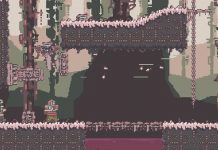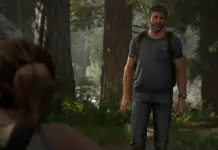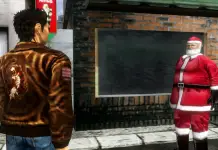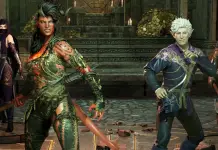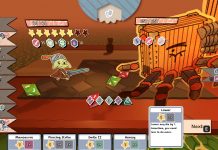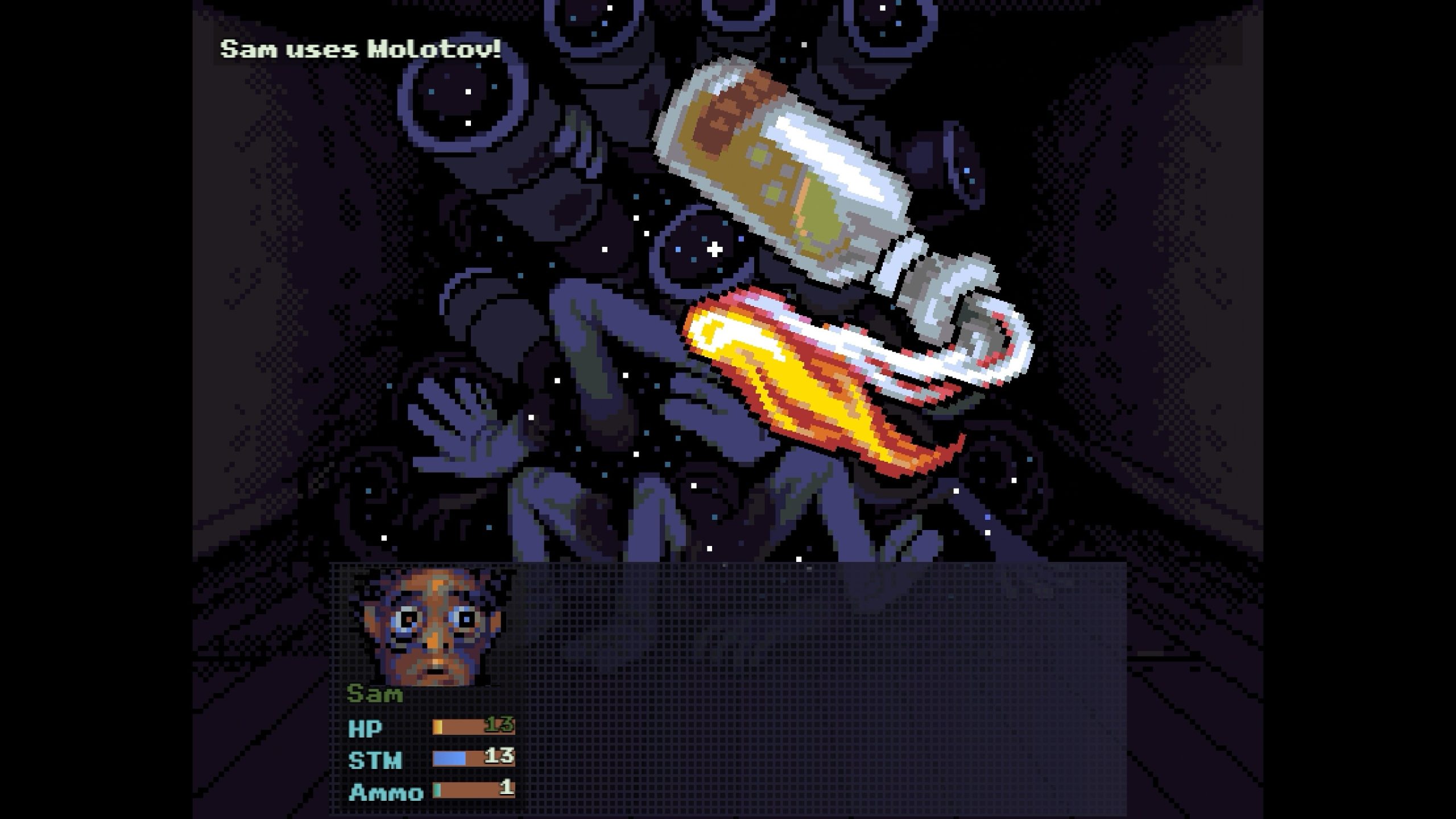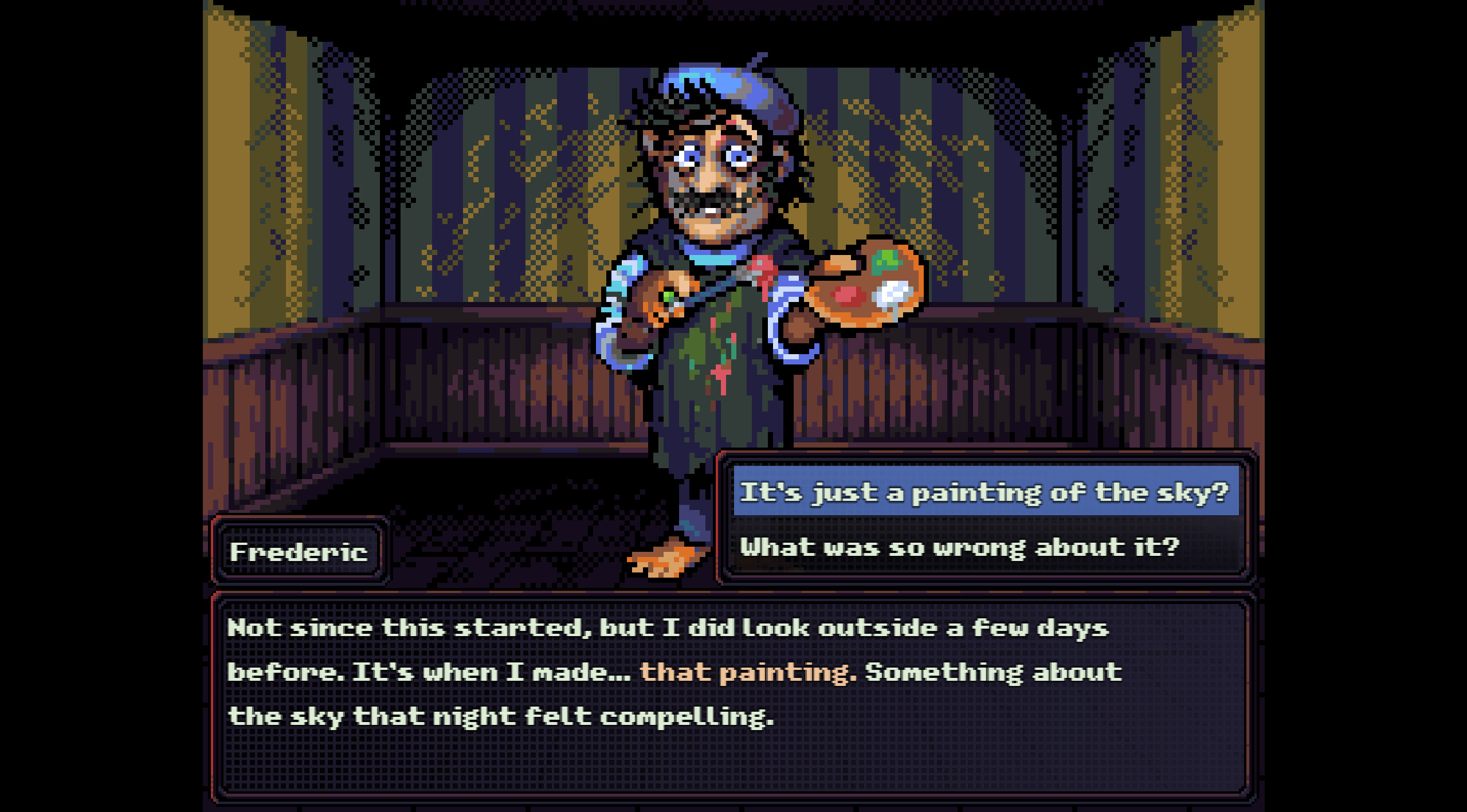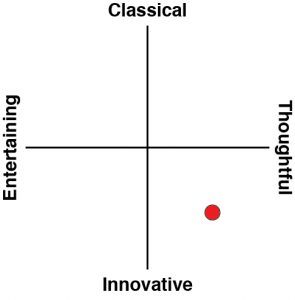COVID lockdowns broke us all a little bit (or, at least, those of us who endured actual lockdowns). Huddled in our little spaces while we waited for the government to assure us that the threat was passed and we could, again, go out and experience the world. At its core, that is what Look Outside is about.
It’s not about something as mundane as a pandemic, though. Oh no. Look Outside is more like Stephen King’s The Mist, where unspeakable horrors roam just outside. Your first encounter with them is going to be when you first load the game up and do exactly what the title tells you to. That will result in your face melting off and getting a game over. The sadist in me loves when a game has a “Game Over” condition within the first minute’s play. Anyone remember King’s Field IV and how, if you walk straight forward at the start, you’ll instantly fall into a hidden pit of lava and die? It’s the perfect way to explain to players that they’re in for a grueling time and are going to need to pay attention to everything.
Look Outside starts that way. You’re living in a small apartment building, and can leave your space to go looking for allies, resources and answers. In fact you need to do that because food and hygiene items are in short supply and if you remain in your apartment, you’ve got no chance of remaining alive right until the end of the Mist-COVID incident. Of course, by leaving the apartment and wandering around you’re going to run into deadly nightmares that are also scavenging around (in their case for people like you).
It’s at that point that Look Outside starts to resemble an enormously creepy version of Earthbound. It’s a turn-based JRPG, where the enemy designs display the same highly whimsical creative designs, however gruesome and Lovecraftian they might be. There’s also a really dark streak of surrealist humour that runs through the thing, which will also leave you with the impression that you’re playing a teenaged angst version of Earthbound that’s going through a goth phase.
What I’m most impressed about with Look Outside, though, is that the game genuinely understands what makes great horror. It’s not about having the ugliest monsters and copious gore – though both are in Look Outside anyway. No, real horror comes from feeling insignificant and ignorant. Not knowing what’s going on, and not really having the ability to do anything about it anyway. That’s why Lovecraft was such an effective writer, even though he never even properly described his monstrosities. What is in the mind’s eye is always worse than what any artist can throw at you. King did the same thing with The Mist, only ever giving us a teaser of what evil must have existed, unsighted, through the wall of white.
Look Outside does everything it can to keep you in the dark about what is actually going on out there. Conversations and cut scenes create two questions for every answer. The familiarity of your own space becomes a greater and greater comfort, and it’s not just because it’s safer. It’s also because it’s more familiar and knowable than even a few paces outside the front door. Look Outside is horror that plays games with your mind rather than tests your video game skills, and these are far too uncommon in an industry obsessed with guns being the solution to every problem.
There’s just one thing that is very unfortunate about Look Outside, and indeed undermines a lot of the good work the developer, Francis Coulombe did in conceptualising and designing the horror: It’s too easy. “Normal” difficulty, which is the highest difficulty at first, is still too generous by around the midway point. Unlike Easy mode, you can’t save anywhere, and there are fewer resources and more difficult combat, but if you’ve played enough JRPGs in your time, you’re still going to be able to min-max yourself a party that is powerful enough to give you a sense of security. From then, the unknown becomes a hurdle, not a menace.
Still, the narrative is non-linear and it’s the kind of game that you’ll want to play a few times to see how different decisions can play out. At about 10 hours for each run, Look Outside values your time, and packs more intrigue and memorable moments into that than many other JRPGs achieve despite being four times as long.
One thing you could never criticise about Coulombe’s work is that he has a great eye for detail and understanding about what “art” means in the context of video games. It’s the clever use of interactivity, the playful subversions of expectation, and freeform creativity that ensures that Look Outside will remain with you, coiled in your mind and puzzling you long after the computer’s put in rest mode.








